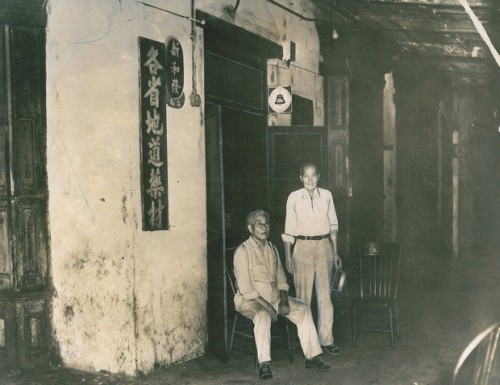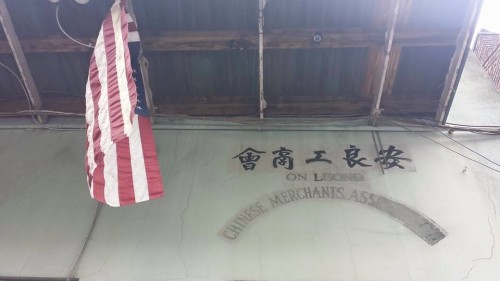When one thinks of American Chinatowns, they usually think of San Francisco and New York, but at one time the third largest Chinatown in the U.S. was in Louisiana. It’s story is an example of how economics and geopolitics shape the growth of ethnic enclaves.
After the American Civil War ended legalized slavery in the U.S., Southern planters faced the challenge of finding labor to work their crops. It was common to employ the same black men and women who had been enslaved, now as sharecroppers or wage laborers, but the planters were interested in other sources of labor as well.
At nola.com, Richard Campanella describes how some planters in Louisiana turned to Chinese laborers. Ultimately, they hired about 1,600 Chinese people, recruited directly from China and also from California.
This would be a doomed experiment. The Chinese workers demanded better working conditions and pay then the Louisiana planters wanted to give. There was a general stalemate and many of the Chinese workers migrated to the city.
By 1871, there was a small, bustling Chinatown just outside of the French quarter and, by the late 1930s, two blocks of Bourbon St. were dominated by Chinese businesses: import shops, laundries, restaurants, narcotics, and cigar stores (some of the migrants had come to the U.S. via Cuba). Campanella quotes the New Orleans Bee:
A year ago we had no Chinese among us, we now see them everywhere… This looks, indeed, like business.
Big Gee and Lee Sing, New Orleans 1937 (photo courtesy of nola.com):
Other residents, it seemed, welcomed the way the Chinese added color and texture to the city. Campanella writes that “New Orleanians of all backgrounds also patronized Chinatown.” Louis Armstrong, who was born in 1901, talked of going “down in China Town [and] hav[ing] a Chinese meal for a change.” Jelly Roll Morton mentioned dropping by to pick up drugs for the sex workers employed in the nearby red light district.
A strip club now inhabits the old Chinese laundry; none of the original Chinatown businesses remain. But it held on a long time, with a few businesses lasting until the 1990s. All that’s left today is a hand-painted sign for the On Leong Merchants Association at 530 1/2 Bourbon St.
For more, get Richard Campanella’s book, Geographies of New Orleans.
Cross-posted at Pacific Standard.
Lisa Wade, PhD is an Associate Professor at Tulane University. She is the author of American Hookup, a book about college sexual culture; a textbook about gender; and a forthcoming introductory text: Terrible Magnificent Sociology. You can follow her on Twitter and Instagram.


Comments 3
Bill R — May 6, 2015
Louis Armstrong's pronouncement about his own profession holds up well for people in general.
He said there are only two kinds of music: good and bad.
Winston Ho 何嶸 — April 10, 2022
Yes, the "old laundry" you refer to is Charlie Tung's Oriental Laundry on 315 Bourbon. The Oriental Laundry was actually a chain of laundries with drop-off stations scattered throughout the city from the 1920s to the 1940s. One of those drop-off stations was 1430 North Dorgenois Street in the Seventh Ward, which is now the Pagoda Cafe, but there were once several identical buildings in other neighborhoods. All of the "pagoda-style" buildings were designed by local architect Edward Sporl, and the architectural drawings for these distinctly non-Chinese "Orientalist" structures are at Tulane's Southeastern Architectural Archive.
As for 315 Bourbon, it was a factory-like structure with two stories of steam cleaning equipment, manned by a small army of mostly African American workers. A fleet of trucks delivered laundry between the pick-up sites and the "main office" every day. The Tung family itself lived on a palatial estate on the third floor of that building. Charlie Tung was likely the wealthiest Chinese American in the city at the time, and he lived a lavish lifestyle, until his sudden death in 1938. He was only in his forties.
His widow, Lee Shee Tung, and her sons keep the business going for another three decades, but they abandoned the laundry business and sold 315 Bourbon in the 1970s. The building became a Houlihan's restaurant from the 1970s until the 1990s. The Oriental Laundry sign was still visible when it was Houlihan's. 315 Bourbon was then purchased by Rick's Cabaret, which is actually a multinational corporation traded on the New York Stock Exchange, with adult entertainment establishments around the world...
Winston Ho 何嶸.
Independent Historian.
Researching Chinese American History in New Orleans
紐奧良華僑歷史研究.
Winston Ho 何嶸 — April 11, 2022
I will add that I don't think New Orleans ever had the "third largest Chinatown" in the country, though it may have been the largest in the South. Other Chinatowns existed in Los Angeles, Seattle, Denver, Chicago, Baltimore, Philadelphia, Boston, El Paso, Houston, St. Louis, Baltimore, and many others. Books and articles have been published on all of these other Chinatowns. Thanks anyway for the post, though.